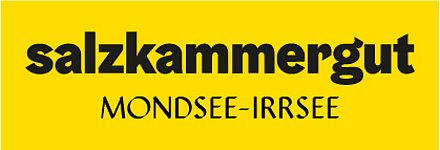© View to lake Mondsee © TVB Mondsee-Irrsee
© View to lake Mondsee © TVB Mondsee-Irrsee
#Mondsee #Irrsee
Hilfberg Church
Tiefgraben am Mondsee, Oberösterreich, Österreich
Kirchengasse 1
5310 Tiefgraben am Mondsee
5310 Tiefgraben am Mondsee

The pilgrimage church on the Hilfberg mountain dominates over the Mondsee bay from its spectacular location.
Every Sunday in July and August at 7:00 am Holy Mass.
MARIA HILF CHURCH
Filialkirche of Mondsee
Patrol: Mary's Visitation - July 2nd
Originally h. Ulrich June 4th
From the former monastery church in Mondsee, you can reach the pilgrimage church Maria-Hilf in a few minutes by a steep road uphill. It was formerly dedicated to St. Ulrich was consecrated.
In the Spanish War of Succession, the Bavarian Elector had placed himself on the side of France, and in 1702 the Bavarians built the military pressure margin. For the Austrian defense also Schanzarbeiter and Schützen from Mondsee were obliged. The fear of foreign troops was therefore very great in the population of the MondSeeLand.
Abbot Amand Göbl turned to the Blessed Virgin Mary for help. He vowed to build a new chapel in honor of Mary. The victory over the Bavarian-French army at Höchstätt in 1704 ended the danger, and the Abbot broke his promise. He had the converted Ulrichskirche converted into a Maria Hilf church, enlarged by side ships and provided them with a tower, sacristy, altars and organ. At the feast of the Visitation of Mary, the Maria-Hilfimage was transferred to the church during a festive parade.
Every year "in festo visitantis" - on the occasion of the "Mariae Heimsuchung" on the 2nd of July - a solemn procession took place on the Maria-Hilf-Berg. The shooters and many guilds with their guards and flags also took part.
The attractiveness of the new pilgrimage site was so strong for people that many of them neglected the traditional pilgrimage to Maria amphitheater in Zell am Moos within a few years. This was reflected in the drastic decline in the victims' allowances after 1706.
With the Maria-Hilf-Kirche, a pilgrimage site was created as planned, which was in line with the trend of the times. The Mondsee pilgrimage, one of the many daughter foundations of Passau, grew rapidly to such an extent that the victim's income of over 300 florins per year reached already one third of that of St. Wolfgang in the 17th century.
The pilgrimage to the image of the Virgin Mary on the mountain had become an important part of the religious life of men, which is also the result of a songbook of 1827 by the Perner family from Mondsee. Of the twelve included members of the Virgin Mary, some are directly related to the pilgrimage to the Maria-Hilf-Berg.
Even in winter, believers visited the church. As a wind and weather protection a wooden portal was built every year and canceled in the spring. After the death of the last abbot, the administrator of the monastery, Father Georg Socher, was very much in favor of the church, which was threatened by the closure. It was argued that the poor house could hardly have existed without the sacrificial funds from the Maria Hilf church. The church remained open - the pilgrimage continues to this day. Still faithful people from near and far visit the Gotteshaus. The popularity of the pilgrimage church also proves the numerous baptisms and ceremonies, for which the Gotteshaus on the mountain is gladly visited. For centuries old places have inspired the imagination of the people. Thus the legend goes that from the Hilfberg down to the monastery a subterranean passage leads, in which a treasure was walled, or mysterious Unterbergmännchen sometimes drew in the night to the Gnadenkirchlein.
TOUR OUTDOOR
The church rises on a flat square, the flat square, surrounded by a shingle-covered wall. There are benches for the pilgrims. In the north-west of the enclosure wall, a sales stand from earlier times has been erected for pilgrimages. In the south-east, the wall is interrupted by the small village of Mesner, in which probably the "Mayrknechte", who have made their way from here, slept. They were paid with two guilders a year and also received money for bedding.
In the church accounts - unlike other pilgrimage churches in the MondSeeLand - here are not mentioned any sacrificial stockbreaks, which is probably due to the very good guarding. At the north-west entrance is still a piece of the old, cobbled pilgrimage route to be seen. Again and again money had to be spent for the construction of the steep path or for bars for stopping. Snow clearance in winter was also very expensive. Outside the wall stands a chapel with a Donatus image on Hilfberg Street. In the reconstruction of the old Gothic church in 1706, the church was extended by side ships to offer more pilgrims. Two-sided entrances also made it possible for larger pilgrim groups to enter the church room comfortably. In the east, a sacristy with a wooden ceiling is attached to the choir. On the steep saddle roof, an octagonal roof rider with open bell-shed and onion helmet rises in the west. The smaller bell still comes from the period of the Gothic gothic era. After the tower, the roof ends in the east with a trapezoidal gable, with the dial of the clock. Below, a gothic portal leads to the first church yoke, which is divided into two levels by the organ Mound.
INNER SPACE
The low room below the organ is separated from the rest of the church by an iron grate. On a wooden board are still votive tablets from more recent times. Lower side ships are attached to the three subsequent church yachts. Then follows a one-year-old choir with a 3/8 final. The cross vaults of the individual yokes are provided with stucco bands. Through the wide segmental windows of the side ships, plenty of light falls into the interior of the church. The choir of the church is illuminated on the left and right by the same window.
The high altar is regarded above all as a masterpiece by Guggenbichler. In the middle of the basement, in a glassed-in shrine, the image of the gracious image - a copy of the original by Luke Cranach the Elder, which is located in Innsbruck. Smaller and larger angel figures surround the picture. Between the smooth pillars, Archangel Gabriel, with the lily, tends to the left, while Raphael holds the fish and the staff on the right. Over the forward curving, closed branches are scattering angels with wide spreading wings. In the middle of the essay, Putten hover over the blessing godfather; the third Archangel Michael, with the souls' balance, closes the picture. In the side altars the columns are replaced by figures. In addition to the altars, Martin and Ulrich, to the right of St. Georg and Florian. Between the speckled gables are the half-figures on the left-hand side. Wolfgang and on the right, Ulrich. During the planning of the three church altars special attention was paid to the previous church patron Ulrich and his worship, and he was represented on every altar. On the high altar, a figure of Ulrich Ulrich, kneeling on the tabernacle, used to kneel. This even protruded into the image of the gracious image. The St. Ulrich, as a former church patron, could thus be venerated with the new image of grace at the same time. He stood, so to speak, on the way of the eyes or thoughts to the miraculous picture. Worthy of note is the sound cap of the pulpit. As in the case of St. Wolfgang, in the center stands the liberation of the "Good Shepherd" with the sheep on the shoulders. All around, angels hold shovels and lambs.
The following legend is told of the graces picture: the eight-year-old daughter saw a picture of the Virgin Mary in the fountain in the house of Baders Göbl, not far from the Ulrichskirche on the foot of the hill (Haus Schießstattgasse, next to the Hilfbergstrasse). But the parents who had been raised could not discover the picture. As the child continues to claim to see it, the parents went to the bottom together with several men. To the surprise of all, a completely dry and wonderfully brilliant Mother-God's image was conveyed to daylight. There was in a room the bathhouse a proper place. The next day it suddenly disappeared and was found again in the Ulrichskirche. After this had been brought back to the Baderhaus, this strange process was repeated again. The Marienbild then came into the Abteikapelle of the monastery and before 1706 in the new Maria Hilf church.
The legend of the miraculous discovery of the image of grace in a well probably originates from the fact that the pilgrims could scarcely have imagined that the Maria Hilf picture should be taken from a town hall in the center of the magnificent Guggenbichler altar. Franz Göbl was a miracle physician in Innsbruck and presumably brought the image of mercy here on the occasion of his marriage with a lunar lake and handed it over to the monastery. A votive image in the parsonage shows him specifically as "the founder of the image of grace." The family of the Göbls was closely connected with the monastery - a younger brother of Franz Göbl had entered the monastery under the name of Amand and was elected abbot in 1697. He was the abbot Göbl, who also had the Ulrichskirche converted into a Maria-Hilf church, and finally handed over the image of the Grace.
5310 Tiefgraben am Mondsee
Phone +43 6232 4166
Fax machine +43 6232 4166 - 4
E-Mail pfarre.mondsee@dioezese-linz.at
Web www.dioezese-linz.at/mondsee
https://www.dioezese-linz.at/mondsee
Contact person
Mr Pfarrer Rektor Dr. Ernst Wageneder
Pfarramt Mondsee
Kirchengasse 1
5310 Tiefgraben am Mondsee
Phone +43 6232 4166
E-Mail pfarre.mondsee@dioezese-linz.at
Web www.dioezese-linz.at/mondsee
- opened daily
Parking
- Parking space: 50
- Bus parking space: 2
- Toilet facility
Service
- Guided tour
- All weather
Season
- Spring
- Summer
- Autumn
- Winter
Please get in touch for more information.






